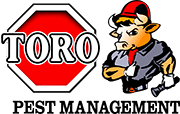Understanding the lifecycle of mosquitoes is fundamental to developing effective control strategies. Mosquitoes go through distinct stages of development, each with specific characteristics and vulnerabilities. By comprehending these stages, pest control professionals can implement targeted interventions to disrupt the mosquito lifecycle and reduce their populations. This article explores the mosquito lifecycle and its implications for control efforts.
Egg to Adult: The Stages of Development
The mosquito lifecycle comprises four main stages: egg, larva, pupa, and adult. The process begins when a female mosquito lays her eggs in or near standing water. These eggs can survive in dry conditions for several months, waiting for water to hatch. Once the eggs hatch, they enter the larval stage, characterized by rapid growth and development. Mosquito larvae, often called “wigglers,” are aquatic and feed on organic matter in the water.
After the larval stage, mosquitoes transition to the pupal stage. Pupae, or “tumblers,” are also aquatic but do not feed. Instead, they undergo significant transformation as they develop into adult mosquitoes. This stage lasts a few days, after which adult mosquitoes emerge from the pupal case and take to the air.
Breeding Habits and Lifecycle Duration
Mosquitoes are prolific breeders, capable of laying hundreds of eggs in a single batch. Common breeding sites include stagnant water sources such as ponds, marshes, birdbaths, and even discarded containers that collect rainwater. The lifecycle duration from egg to adult can vary depending on environmental conditions, typically ranging from a week to several weeks.
Warm temperatures and ample standing water accelerate the development process, leading to faster population growth. Conversely, cooler temperatures and dry conditions can slow down the lifecycle. Understanding these dynamics helps pest control professionals anticipate mosquito population surges and implement timely interventions.
Implications for Control Strategies
Knowledge of the mosquito lifecycle is crucial for designing effective control strategies. Targeting mosquitoes at different stages of their development can yield better results. For instance, eliminating standing water sources can prevent eggs from hatching and larvae from developing. Larvicides, substances that kill mosquito larvae, can be applied to water bodies to reduce the number of mosquitoes that reach adulthood.
Adult mosquitoes can be controlled through various methods, including insecticides and traps. However, these measures are often more effective when combined with efforts to disrupt the earlier stages of the lifecycle. By integrating multiple control strategies, pest control professionals can achieve more sustainable reductions in mosquito populations.
The mosquito lifecycle offers valuable insights into how these pests reproduce and thrive. By understanding and targeting specific stages of development, pest control efforts can be more effective and efficient. Professional mosquito control services leverage this knowledge to implement comprehensive strategies that address mosquitoes at every stage of their lifecycle. Investing in these services not only reduces mosquito populations but also minimizes the health risks associated with these persistent pests.









